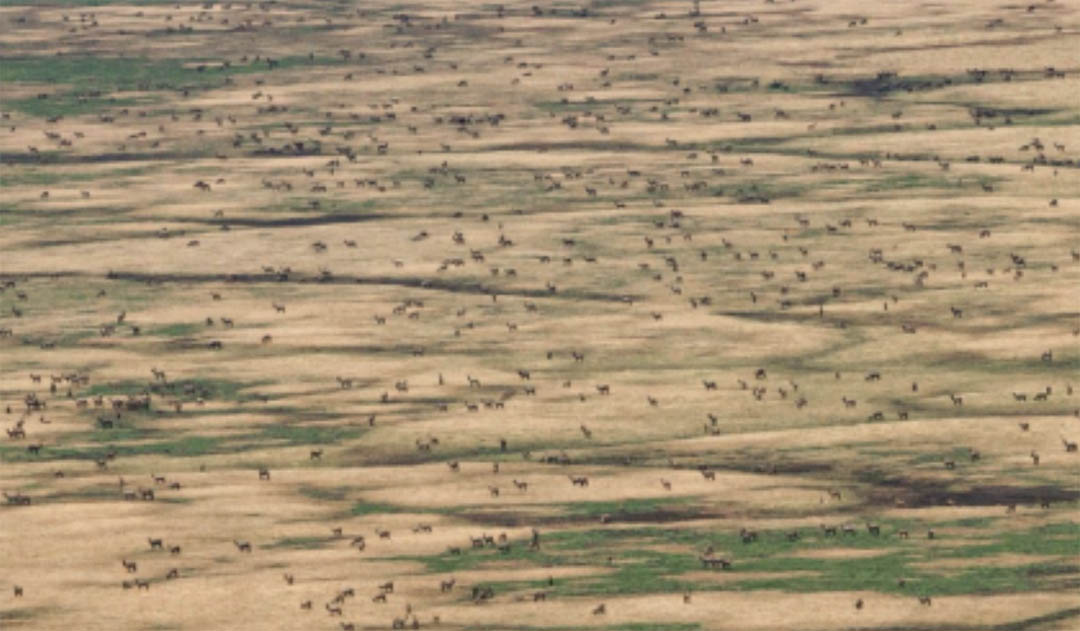Waterbuck in a floodplain at Gorongosa National Park, Mozambique
Article published by Justine Becker, Matt Hutchinson and other co-authors in Ecological Monographs.
The spectacular abundance of waterbuck has become synonymous with Gorongosa National Park. More than 57,000 waterbuck were counted in 2018. This is arguably the largest and densest population of this species in any national park in Africa.
Yet, this was not always so. In pre-war Gorongosa, the highest total was 3,557 waterbuck that were counted in 1969. They were narrowly confined to the major floodplain grasslands. Waterbuck are likely to have survived the war in higher numbers than other ungulates owing to a combination of their year-round occupation of the floodplain (which is swampy, has high visibility, and lacks trees for the anchoring of snares) and their allegedly disfavored status as bushmeat. That gave them a head start in the low competition, low-predation post-war environment.
From a multitude of measurements and using cutting-edge techniques, an international group of scientists has now brought together the story of how waterbuck expanded to such a degree that resource depletion in their preferred habitat led them to spread into historically avoided savanna habitat. This expansion was demographically skewed: mixed-sex groups of prime-age individuals remained more common in the floodplain, while bachelors, loners, and subadults populated the savanna. By coupling DNA metabarcoding and forage analysis, the researchers show that waterbuck in these two habitats ate radically different diets, with energetic performance being higher in the floodplain.
The first signs are there that the current high numbers of waterbuck will most likely not be sustained over time. As competition by buffalo and zebra increase and as predation pressure rises, it can be expected that waterbuck numbers will come down and that they will be retreating from the savanna areas. A total of 52,000 waterbuck were counted in 2020.
The study was led by Justine Becker e Matt Hutchinson from the Department of Ecology and Evolutionary Biology at Princeton University in the USA, with contributions by other Princeton researchers, Gorongosa scientists, National Geographic collaborators and two Mozambican students in the full-time Masters in Conservation Biology program that is hosted in the Park. The results provide us with a much-needed understanding of the fascinating natural processes that are unfolding during the restoration of the Gorongosa landscape.
